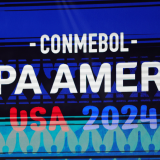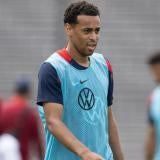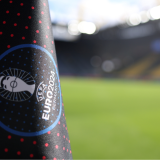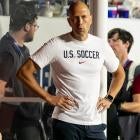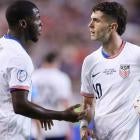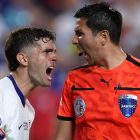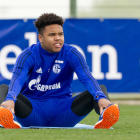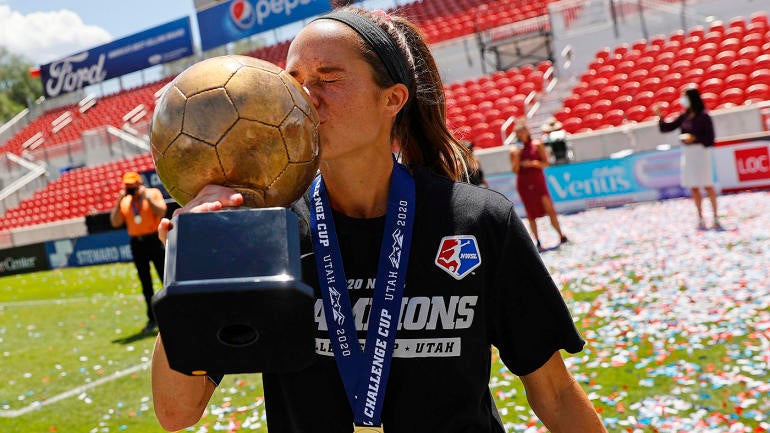
The National Women's Soccer League became the first professional team sports league to return to play in United States with the 2020 Challenge Cup. As other major sports leagues in the country continue map out their scheduled plans to finish their respective seasons, NWSL has since concluded its tournament with zero positive COVID-19 cases in Utah. The league did experience a minor hiccup before the start of the competition, with the Orlando Pride withdrawing due to an outbreak within the team in their region.
A first-time champion was crowned with the upstart Houston Dash defeating the Chicago Red Stars, and while it remains to be seen what else is to come in 2020 for the league, their overall return-to-play blueprint can only be considered a success.
Let's take a look at how things played out with the Challenge Cup.
Commissioner Baird led NWSL into uncharted territory
As everyone across the globe came to grips with what life looked like during the a pandemic, NWSL was forced to delay the start of the regular season in an effort to put the healthy and safety of the players and staff at the forefront. Women's professional sports has long lacked the investment, sponsorship, coverage and partnerships needed to ensure it's growth. The fallout stemming from a long hiatus could have been detrimental for the growth and future of NWSL. As commissioner Lisa Baird stepped into the unknown, she did so with a committed group of owners and sponsors, which ultimately led to the birth of the Challenge Cup and later the comprehensive health and safety protocols for a bubble-like environment in Utah. It's safe to say that thanks to the leadership brought on by Baird, the league is currently at a better place and setting examples for other sports leagues around, especially as we see baseball struggle with its protocols.
What was life inside the 'bubble' like?
Players throughout the tournament struggled with round-the-clock life within the bubble, especially the time spent in the hotel village when teams weren't playing matches or training. Despite having indoor access to gyms, cafeterias and meeting spaces, it can be a mental drain being stuck in isolation for a month, especially for those that were not with their significant others. Players, coaches and staff members had access to specialists and therapists to help cope with any mental fatigue throughout the month-long journey.
Testing was another round-the-clock task as teams began to enter the bubble. Everyone involved had tests prior to a matchday and after. The league proudly announced that over 2,000 tests were conducted ahead of the final, and the bubble never popped. Everyone left Utah without COVID-19.
OK, but what about the soccer?
It's worth prefacing that these players were tasked to go through and played under unprecedented circumstances, so it's only right that we rate the quality of play on the pitch through multiple lenses. Take into consideration the abrupt stops to training and preseason matches, and then think about everyone involved being asked to isolate and maintain social distancing for a significant period of time.
It was monumental hurdle to overcome, especially for teams who had the added challenge of following city and state guidelines ahead Challenge Cup preparations. While teams were eventually able to settle into a brief phase of training and practices, nothing can replace the importance or value of their traditional offseason and preseason process.
Despite all the setbacks, the Challenge Cup provided us with some outstanding individual performances across the board. There were 36 goals scored in 23 matches, a 1.57 goal-per-match average. Sure, the goals were tough to come by from time to time, but that led to some incredible goalkeeping and defending (not to mention, a ton of clean sheets). The final lived up to the hype as Sophie Schmidt found the back of the net early and Rachel Daly and Shea Groom kept the intensity up en route to Houston Dash's first title in franchise history.
What's next
The NWSL board of directors held a meeting shortly before the Challenge Cup final. During a recent press conference, Baird revealed that the league will soon provide clubs and the Players Association a statement regarding the next return-to-play steps. While it was initially planned for teams to resume training on Aug. 10, the Players Association asked that the day to be pushed to Aug. 17 in order to allow more time for players to recover from what proved to be a demanding tournament.

